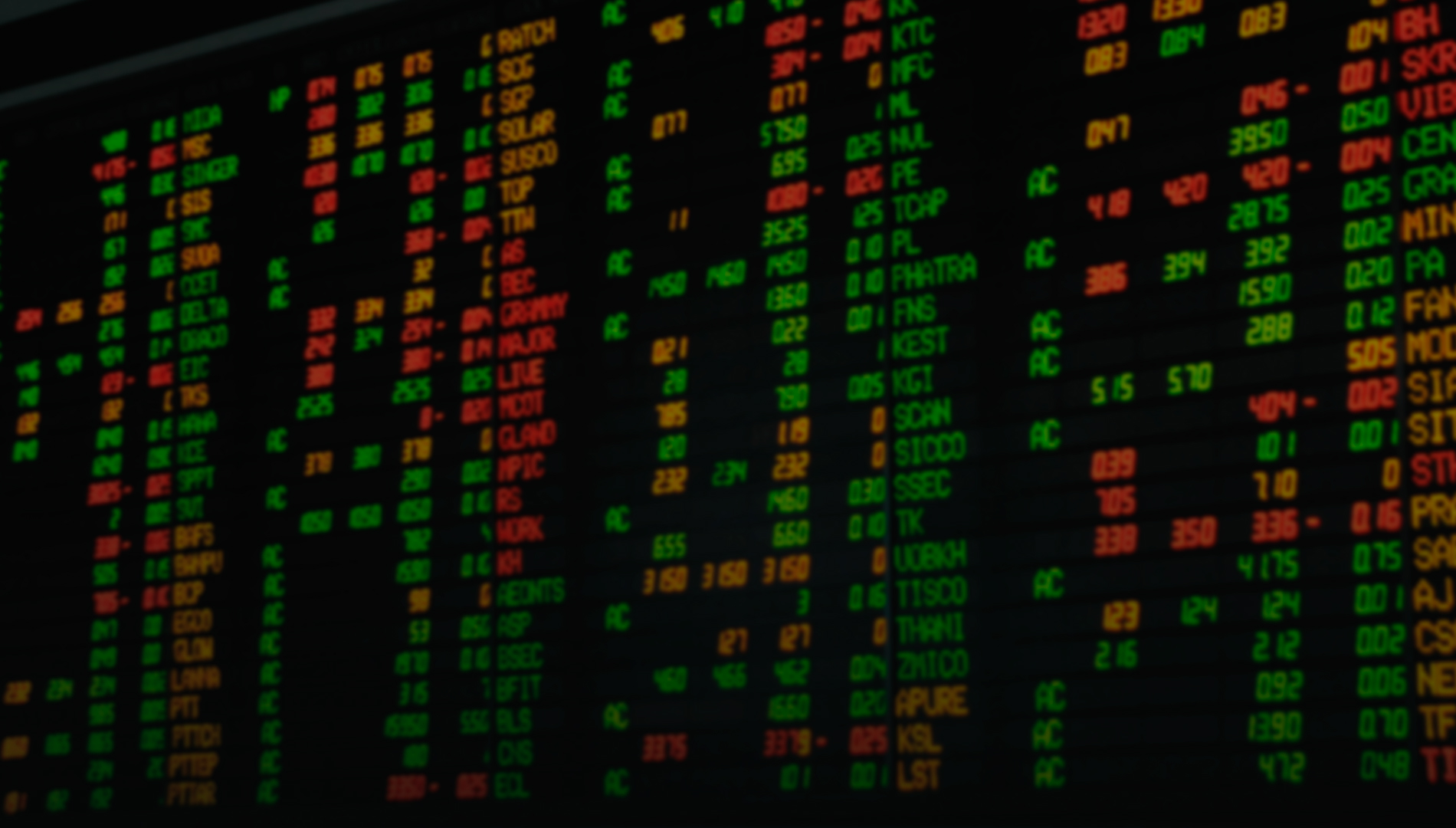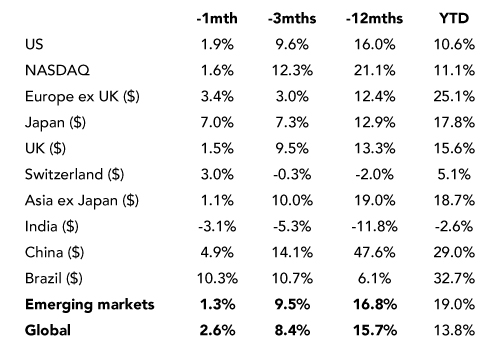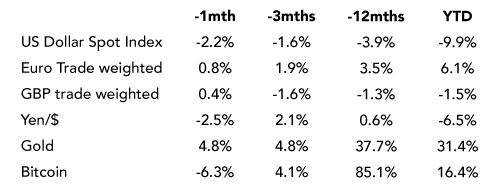
Sep 3, 2025
The world economy entered late summer with a mixed picture. In the United States, consumer spending
remained resilient, supported by a firm labour market and decent wage growth, but inflation in
services proved stubborn. That being said global economic data was baised to strnger than expected
and inflation lower than expected helping asset markets perform.
Markets grew increasingly confident that the Federal Reserve would cut rates in September as data
showed softer job creation and moderation in housing demand. Europe offered little surprise:
inflation sat close to 2%, giving the European Central Bank scope to contemplate easing later in the
year. China’s activity data showed manufacturing still stuck below expansionary territory, though
services improved, suggesting stabilisation. Japan’s inflation moderated but stayed above target,
while India continued to deliver rapid growth, powered by services and public investment.
Chart 1: Global Economic Surprise Indices – Inflation and Growth
Index

Source: Bloomberg
United States
The US economy in July 2025 showed a blend of resilience and strain. Consumer spending remained
solid, rising at a healthy monthly pace as households continued to draw on wage gains and
accumulated savings, though higher borrowing costs were clearly tempering demand for housing and
durable goods. Inflation stayed sticky in services, with the core PCE index running close to 3%
year-on-year, leaving the Federal Reserve in a delicate position. However, employment growth slowed
further, pointing to a gradual cooling of the labour market, yet unemployment remained low enough to
keep wage pressures alive. Against this backdrop, financial markets grew increasingly convinced that
the Fed would pivot towards its first rate cut in September, interpreting the summer’s data as
sufficient evidence that disinflation is progressing, albeit unevenly.
Europe
Economic momentum across Europe remained subdued in July.
Growth indicators suggested little more
than stagnation, with industrial output soft and consumer confidence fragile. Inflation, however,
continued to trend lower, with headline rates hovering near 2% and core easing gradually. This gave
the European Central Bank space to signal that policy easing later in the year was possible, though
officials remained cautious not to reignite price pressures. Political noise around fiscal rules and
budgetary debates, particularly in France and parts of southern Europe, added to market unease but
did not derail the broader narrative of disinflation and low growth.
Japan
Japan remained one of the brighter spots in the developed
world.
July brought further evidence of
stable, above-target inflation, largely supported by services and wage gains, while commodity-linked
pressures eased. Equity markets responded strongly, breaking record highs as foreign investors
poured money into Japanese assets, attracted by corporate reforms, share buybacks, and relative
currency weakness. The Bank of Japan held its cautious stance, but with inflation holding,
speculation grew that the central bank may take further steps towards policy normalisation. The
sense that Japan had broken out of decades of stagnation was increasingly reflected in both investor
sentiment and capital flows.
Asia ex-Japan
Across the rest of Asia, July was more mixed. China remained a drag, with manufacturing surveys
stuck below the threshold of expansion, though the services sector showed tentative stabilisation.
Investors looked for more targeted stimulus from Beijing to sustain growth momentum. India, by
contrast, powered ahead with another strong GDP reading, buoyed by services, infrastructure
spending, and healthy domestic demand. Southeast Asia navigated a middle path: external headwinds
from weak global trade were offset by resilient internal consumption, particularly in Indonesia and
the Philippines. Regional markets benefited from a softer US dollar, but sentiment remained split
between optimism on India’s structural story and concern over China’s sluggish recovery.
Chart 2: Emerging Market Surprise Indices Slip to Neutral
Index

Source: Bloomberg
Asset Markets
Chart 3: Asset Market Returns (since Jan 22)

Source: Bloomberg
Equities
Equity markets produced a generally positive performance in July, though regional outcomes varied.
In the United States, large-cap benchmarks advanced
steadily as investors digested dovish signals
from the Federal Reserve and grew more confident that policy easing was close at hand. Technology
remained a key driver, yet the rally broadened into smaller and cyclical companies towards the end
of the month, hinting at healthier market breadth. European equities
in local currency terms were
less inspiring, reflecting sluggish growth and political noise, with modest gains masking
persistent
investor caution. However the dollar’s weaknes enhanced returns for $ based investors. Japan, by
contrast, stood out as one of the strongest performers, with indices scaling new records
as
corporate reforms and steady earnings upgrades attracted a renewed wave of foreign capital. Again
dollar returns were enhanced by the strength of the Yen.
Table 1: Equity Market returns in August

Source: Bloomberg
Emerging markets had a more nuanced month
Latin America benefitted from softer inflation and currency strength, while Asia ex-Japan was held
back by China’s hesitant recovery, leaving performance uneven across the bloc.India performed
poorly, continuing its trend of underperformance, exacerbated by a lacklustre quarterly earnings
season. The impact of 50% US tariffs began to sink in as the month ended. Brazil also saw a setback
following an earlier run-up.
Equity sector performance
The Information Technology (IT) sector was quiet for a change. Nvidia results were broadly in line
with expectations and hence failed to provide an end of the month boost to the performance of the
sector. Banks sectors continued to outperform. The healthcare sector started to recover particularly
inspired by news that Warren Buffet’s fund had started to build positions in the sector.
Table 2: Global equity sector returns in August

Source: Bloomberg
Bond markets
August was a steadier month for bonds, marked by a broad decline in yields as markets looked ahead
to a potential September cut from the Federal Reserve. US Treasuries led the move, with the ten-year
yield settling in the low 4% range after spending much of early summer closer to mid-4s. The rally
was strongest at the front end of the curve, where investors adjusted positioning for imminent
easing. In Europe, Bund yields eased toward 2.7% as inflation data remained benign and the ECB
appeared more comfortable with its disinflation progress. UK gilts also found support, though the
conversation around government spending kept some pressure on the long end of the curve.
Chart 4: US 10 year Bond Yield in a Trading Range (%)

Source: Bloomberg
Chart 5: US High Yield spread slips back lower again (%)

Source: Bloomberg
Table 3: Bond market returns In August

Source: Bloomberg
Credit markets reflected a strong appetite for risk.
Investment-grade spreads stayed pinned near
cycle lows, while high-yield spreads narrowed further, buoyed by improving market breadth in
equities and a calmer funding environment. Emerging market debt added to the constructive tone,
drawing inflows as the softer dollar and declining global yields improved the appeal of both
hard-currency and local-currency bonds, though country-specific inflation risks kept performance
uneven.
In the credit sector, high-yield bonds demonstrated resilience, but
more modest returns as already tight spreads constrained capital returns.
FX and Precious metals
The dollar softened in August, losing around 2% on its trade-weighted
index as investors prepared for a September rate cut from the Federal Reserve. The euro gained
modestly, supported by stable inflation and a sense that the ECB would move more slowly
than the
Fed in adjusting policy. Sterling was firmer, but only by about 0.4%
over the month — enough to
mark progress, but far from a breakout, with fiscal concerns and uneven domestic data keeping
investors cautious. The yen was volatile but ended the month
stronger, as falling US yields
unwound some of the carry-trade pressure.
Emerging market currencies broadly benefitted from the weaker dollar
backdrop: India’s rupee found steady support from a strong GDP report, whereas China’s
yuan
weakened as capital outflows persisted, underscoring the divergence within Asia.
Table 4: Monthly performance of precious metals and currencies for
August

Source: Bloomberg
Gold told the opposite story, strengthening to record highs
above
$3,400 per ounce. A weaker dollar, political noise around US monetary governance, and expectations
of a Fed rate cut created a perfect mix for renewed demand, underlining gold’s safe-haven appeal
in uncertain times.
In August 2025, Bitcoin surged to new record highs above $124,000 before sharp profit-taking
triggered a heavy correction. A mid-month wave of liquidations erased over a billion dollars of
positions, dragging prices back toward $108,000. By month-end, it stabilised around $110,000,
leaving the market balanced between strong institutional demand and persistent volatility.